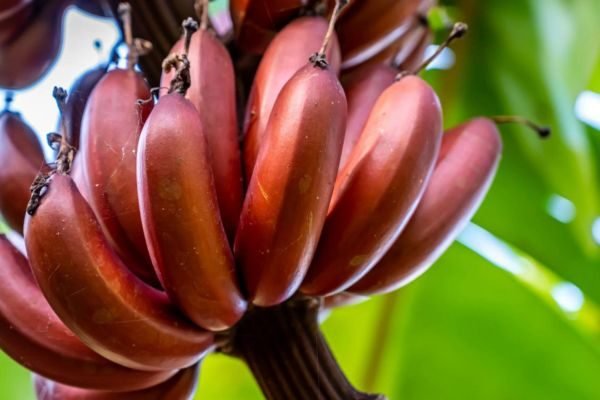
“Tropical Treasures of Sri Lanka”
Embrace the abundance of luscious tropical fruits that grace our island, Sri Lanka. Picture-perfect scenes of roadside stalls adorned with vibrant displays of deep-purple mangosteens and golden clusters of bananas dangling overhead are commonplace sights for us, the proud locals. Flourishing under the nurturing care of our optimal agro-climate and enriched by centuries of horticultural expertise, these fruits boast unparalleled quality.
Beyond their exotic allure, these tropical treasures are imbued with extraordinary medicinal and nutritional benefits, capable of revitalizing your well-being. What’s even more delightful is that the majority of Sri Lanka’s tropical fruit bounty finds its way to global markets, spreading the essence of our island’s richness worldwide.
Here is a glance at some of the most widely sought-after fruit varieties from Sri Lanka.
BANANA
Dive into the rich diversity of bananas cultivated in Sri Lanka, where this versatile fruit holds a significant place in both agriculture and local cuisine.
Banana Cultivation in Sri Lanka
Bananas, the fifth most important agricultural crop globally, thrive in over 130 countries, including the tropical haven of Sri Lanka. Covering nearly 60,000 hectares of land, banana cultivation accounts for a staggering 54% of the country’s total fruit cultivation area. Despite its widespread cultivation, bananas are primarily grown on small subsistence farms, each producing approximately 780,000 metric tons of bananas annually. While a modest 5% of this production finds its way to international markets, the majority fulfills local demand.
In Sri Lanka, a remarkable array of 29 banana cultivars and two wild species grace the agricultural landscape, with five varieties specifically cultivated for cooking purposes. The remaining cultivars, excluding two wild types, are cherished for their dessert-like sweetness. Among the most beloved varieties are Seeni Parakum, Kandula, Ambul Nadee, Nethra Palam, Ambum, Kolikuttu, Seeni, Aanamalu, and Rath Kesel. Beyond commercial production, bananas thrive in home gardens across the island, serving as a staple fruit in everyday Sri Lankan life.
Versatile Uses of Bananas
Bananas in Sri Lanka are not only enjoyed fresh but also find their way into diverse culinary creations. Cooking varieties, colloquially known as ‘green bananas’ or ‘plantains,’ are transformed into delectable dishes through frying, boiling, roasting, baking, or other cooking methods. Dessert/table banana cultivars, on the other hand, are savored raw or processed into purees, juices, and flours, extending their shelf life and culinary applications. Banana puree, for instance, enhances the flavor and texture of bakery items, beverages, dairy desserts, sausages, and numerous other processed foods. Additionally, Sri Lankans preserve the longevity of ripe bananas through slicing, drying, and storage, ensuring a constant supply of this beloved fruit.
Health Benefits of Bananas
Bananas from Sri Lanka not only tantalize the taste buds but also offer a plethora of health benefits:
Regulates Blood Pressure: With a potassium content of approximately 350 mg per medium-sized banana, this fruit plays a crucial role in maintaining optimal blood pressure levels and heart function. The abundant potassium content positions bananas as an effective natural remedy for high blood pressure, endorsed by the US Food and Drug Administration.
Promotes Digestive Health: Packed with non-digestible fibers like cellulose, hemicellulose, and alpha-glucans, bananas aid in regulating bowel activity, alleviating constipation, and managing diarrhea. Their high pectin content facilitates smooth bowel movements by enhancing water absorption in the colon.
Antioxidant Powerhouse: Bananas boast an impressive antioxidant profile, particularly rich in phenolic compounds. These antioxidants combat oxidative stress, reducing the risk of chronic diseases such as Alzheimer’s, Parkinson’s, cancer, and cardiovascular ailments. Additionally, they shield against reactive oxygen species, bolstering overall health and well-being.
Discover Sri Lanka’s Bananas
Experience the vibrant flavors and abundant nutrients of bananas sourced from the tropical paradise of Sri Lanka. Indulge in this wholesome fruit, renowned for its versatility, taste, and unparalleled health benefits.
CITRUS
Green Orange: Unveiling Sri Lanka’s Citrus Wealth
Within the genus of citrus, lies a treasure trove of trees with immense economic and medicinal significance. From oranges to limes, mandarins to lemons, and grapefruits, the diversity within this genus is astounding. In Sri Lanka, although commercial cultivation of citrus is still emerging, the abundance of citrus germplasm presents a promising foundation for future growth. Citrus trees flourish in the dry, cool regions with higher elevations across the island, often cultivated in backyard gardens.
The Versatile Uses of Citrus
The citrus tree yields not only succulent fruits but also valuable components from its leaves and stems, brimming with bioactive compounds. While the fruit reigns supreme, cherished for its juicy pulp and tangy flavor, every part of the citrus tree finds purpose. Citrus fruits are commonly juiced, enhancing both homemade and commercial recipes while the zest is utilized in the production of essential oils and aromatic compounds. Additionally, in traditional folk medicine, citrus species are revered for their medicinal properties. Lemon juice, when combined with honey, is believed to aid in weight loss, while lemon juice alone is employed in treating urinary tract infections. Moreover, a concoction of lemon juice and olive oil is said to dissolve gallbladder and kidney stones, reflecting the diverse therapeutic applications of citrus.
Unlocking the Health Benefits of Citrus
Delve into the myriad health benefits offered by citrus fruits:
Rich in Fiber: Citrus fruits are a powerhouse of fiber, with just one cup of oranges boasting four grams. This fiber content not only promotes digestive health but also aids in weight management and regulates bowel movements. Soluble fiber, abundant in citrus, plays a key role in lowering cholesterol levels.
Prevention of Anemia: Packed with folate, a vital water-soluble vitamin essential for DNA and red blood cell production, citrus fruits combat anemia. A single 225 ml glass of orange juice provides a substantial 75 mcg of folic acid, contributing significantly to the recommended daily intake. Furthermore, the high vitamin C content in citrus enhances the absorption of non-heme iron, thereby preventing anemia.
Anticancer Properties: Citrus fruits contain an array of limonoids, potent phytochemicals known for their ability to inhibit tumor formation. Limonin and nomilin, prominent limonoids found in citrus, stimulate the enzyme glutathione S-transferase, thereby thwarting tumor development. Grapefruits and oranges, rich sources of limonoids, play a pivotal role in cancer prevention.
Discover Sri Lanka’s Citrus Varieties
Embark on a journey to explore the diverse citrus offerings from Sri Lanka, where each fruit is a testament to nature’s bounty and therapeutic wonders. Embrace the tangy zest and nutritional richness of Sri Lankan citrus, cultivated with care and revered for its multifaceted benefits.
MANGO
Mango Marvels: A Taste of Sri Lanka’s Bounty
Sri Lankan mangoes are renowned for their rich aroma, vibrant peel coloration, distinctive flavor, and exceptional nutritional profile. Fueled by these qualities, mango exports from Sri Lanka have garnered a devoted following, with mango orchards sprawling across approximately 26,000 hectares of the island. Annual mango production stands impressively at around 96,500 tons, showcasing the nation’s fruitful cultivation efforts. Among the approximately 10 mango varieties commonly grown in Sri Lanka, Karutha Colomban, Willard, Vellai Colomban, Ambalavi, and Malwana mangoes proudly trace their origins to the island’s fertile soils.
The Versatility of Mango
Each mango variety boasts a unique taste and aroma, influenced by the distinct agro-ecological regions where they thrive. For instance, mangoes cultivated in the dry zone exhibit a special flavor, aroma, and hue, driving heightened consumer demand. While many locals relish the raw, unadulterated taste of mangoes, these succulent fruits undergo various processing methods to yield an array of delectable products. From juices and purees to nectars, leathers, pickles, ice creams, and canned slices, mangoes lend their essence to a myriad of culinary creations, captivating palates worldwide.
The Health Benefits of Mango
Discover the wholesome advantages of indulging in Sri Lanka’s mango bounty:
Blood Sugar Regulation: Contrary to misconceptions, mango consumption does not predispose individuals to diabetes. On the contrary, studies suggest that fresh mango intake may actually help lower blood sugar levels. Notably, research indicates that the consumption of freeze-dried mango over 12 weeks led to reduced blood glucose levels in obese adults, highlighting mango’s potential role in blood sugar management.
Cancer Prevention: Mangoes emerge as potent allies in the fight against cancer, with research showcasing their effectiveness against various types of cancer cells. In vitro studies reveal that mango extracts and phytochemicals exhibit inhibitory effects on breast cancer cell growth, proliferation, migration, and invasion, while also inducing apoptosis and cell cycle arrest. Furthermore, mango consumption is associated with a reduced risk of lung, colon, and prostate cancer.
Immune System Boost: Bursting with essential vitamins, minerals, and micronutrients, mangoes serve as a natural boost to the immune system, fostering overall health and vitality. These fruits are particularly rich in vitamins A, C, E, K, potassium, magnesium, riboflavin, and more. A mere 165 grams of mango provides a remarkable 67% of the daily vitamin C intake, facilitating iron absorption, preventing anemia, and promoting cellular growth.
Experience Sri Lanka’s Mango Magic
Embark on a sensory journey to experience the unparalleled delights of Sri Lanka’s mangoes, where every bite offers a symphony of flavor and nourishment. Embrace the allure of these tropical treasures, celebrated for their exquisite taste and manifold health benefits, and savor the essence of Sri Lanka’s abundant harvest.
WATERMELON
Sri Lankan Watermelons: Nature’s Refreshing Bounty
Nestled within the warm embrace of the Cucurbitaceae family, watermelon, a quintessential summer crop, traces its origins to the sun-drenched soils of Africa. Today, this succulent fruit flourishes in tropical, subtropical, and arid regions worldwide, including the fertile lands of Sri Lanka. Primarily cultivated in the dry and intermediate zones of the island, watermelon stands as a beacon of instant refreshment, coveted for its hydrating properties and irresistible sweetness.
The Refreshing Uses of Watermelon
Watermelon’s claim to fame lies in its ability to quench thirst like no other. Served chilled on scorching summer days, it morphs into the quintessential beverage, offering a revitalizing splash of coolness. Beyond its liquid allure, watermelon shines as a healthy snack when sliced or cubed, offering a guilt-free indulgence brimming with hydration and flavor. For the adventurous palate, grilled watermelon adds a fiery twist to its natural sweetness. Furthermore, watermelon’s versatility extends to the realm of culinary creations, where it lends its essence to jams, sweets, and sauces, enriching every bite with its juicy goodness.
Delve into the plethora of health benefits bestowed by Sri Lanka’s watermelon harvest:
Hydration and Weight Management: With a water content of 92%, watermelon reigns supreme as nature’s hydrating elixir. Adequate hydration is vital for regulating body temperature, preventing infections, and sustaining organ function. Moreover, the high water content of watermelon promotes satiety, curbing appetite and potentially aiding in weight loss by reducing overall food intake.
Abundant Vitamin C: Watermelon emerges as a potent source of vitamin C, an essential nutrient crucial for immune function and overall health. With 3.72 grams of vitamin C per 100 grams, watermelon offers a substantial boost to daily requirements. Just one cup of this juicy fruit can fulfill 20% of the recommended daily intake, safeguarding against vitamin C deficiency and bolstering the body’s antioxidant defenses. By neutralizing free radicals, vitamin C protects against cellular damage and promotes cardiovascular health.
Experience the Refreshing Essence of Sri Lankan Watermelons
Embark on a sensory journey to savor the refreshing allure of Sri Lanka’s watermelons, where each bite offers a burst of natural sweetness and hydration. Embrace the rejuvenating properties of this tropical delight, celebrated for its unrivaled taste and manifold health benefits. From thirst-quenching beverages to tantalizing culinary creations, let Sri Lankan watermelons be your oasis of refreshment in the sweltering heat.
Sri Lankan King Coconut (Thembili): A Royal Delight
Embrace the splendor of Sri Lanka’s king coconut, fondly known as “Thembili,” a majestic fruit that reigns supreme in the island’s culinary and cultural landscape. Renowned for its refreshing taste, vibrant color, and myriad health benefits, the king coconut stands as a symbol of tropical abundance and natural vitality.
Introduction to King Coconut (Thembili)
The king coconut, scientifically known as Cocos nucifera var. aurantiaca, holds a special place in Sri Lankan tradition and folklore. Unlike its ubiquitous cousin, the brown coconut, the king coconut boasts a distinctive orange-yellow husk and a uniquely sweet flavor. Indigenous to Sri Lanka and other tropical regions, this regal fruit is revered for its unparalleled taste and refreshing properties.
Cultivation and Distribution
Sri Lanka’s fertile soils and tropical climate provide the ideal conditions for the cultivation of king coconuts. The island’s coastal regions, with their abundant sunlight and ample rainfall, serve as prime locales for king coconut plantations. Thriving in sandy soils and humid environments, king coconut palms dot the landscape, offering a bountiful harvest of nutritious fruits. From roadside vendors to bustling markets, king coconuts are readily available across the island, serving as a beloved beverage and natural remedy for locals and visitors alike.
Uses of King Coconut (Thembili)
King coconuts are cherished for their versatile uses, offering a refreshing beverage and a host of culinary delights. The sweet, aromatic water found within the king coconut serves as a revitalizing drink, especially favored for its natural electrolytes and hydration properties. Beyond its thirst-quenching appeal, king coconut water is also used as a base for tropical cocktails, smoothies, and refreshing desserts. Additionally, the tender flesh of the king coconut can be enjoyed fresh or incorporated into a variety of savory and sweet dishes, adding a touch of tropical flavor to culinary creations.
Health Benefits of King Coconut (Thembili)
Discover the myriad health benefits bestowed by Sri Lanka’s king coconut:
Hydration and Electrolyte Balance: King coconut water is nature’s perfect hydrator, rich in electrolytes such as potassium, sodium, and magnesium. Consuming king coconut water helps replenish electrolytes lost through sweating and physical exertion, making it an ideal beverage for rehydration and recovery.
Nutrient-Rich Refreshment: In addition to electrolytes, king coconut water is a rich source of vitamins, minerals, and antioxidants. It provides essential nutrients such as vitamin C, B-complex vitamins, and amino acids, promoting overall health and vitality.
Digestive Health Support: King coconut water is known for its gentle laxative properties, aiding in digestion and promoting regularity. It helps soothe the digestive tract and alleviate symptoms of indigestion, making it a popular remedy for gastrointestinal discomfort.
Sri Lankan Veralu: The Ceylon Olive
Embrace the rich heritage of Sri Lanka’s Veralu, affectionately known as the Ceylon Olive, a cherished fruit steeped in tradition and imbued with natural goodness. Renowned for its wholesome attributes, including an abundance of minerals, vitamins, fiber, and antioxidants, Veralu stands as a beloved snack and a revered ingredient in traditional medicine.
Introduction to Veralu (Ceylon Olive)
Veralu, also recognized as the Ceylon Olive, holds a special place in Sri Lankan culture and cuisine. This small, round fruit features a glossy green exterior and a tangy-sweet flavor profile, making it a popular choice for snacking and culinary applications. Indigenous to Sri Lanka and other tropical regions, Veralu thrives in the island’s fertile soils and warm climate, flourishing in both wild and cultivated settings.
Cultivation and Distribution
Sri Lanka’s verdant landscapes provide an ideal environment for the cultivation of Veralu trees. These resilient trees can be found in various regions across the island, from rural villages to lush forests. While Veralu is often enjoyed fresh from the tree, it is also harvested for commercial purposes, with its fruits making their way to local markets and roadside stalls. Whether enjoyed as a simple snack or incorporated into traditional dishes, Veralu delights taste buds and nourishes the body with its natural goodness.
Uses of Veralu (Ceylon Olive)
Veralu’s versatility extends beyond its delectable flavor, offering a wealth of culinary and medicinal benefits. As a snack, Veralu is enjoyed both fresh and pickled, offering a burst of tangy-sweetness with each bite. It serves as a refreshing accompaniment to meals or a wholesome treat on its own. Additionally, Veralu finds its way into a variety of traditional dishes, adding depth of flavor and nutritional value to soups, salads, curries, and chutneys.
Health Benefits of Veralu (Ceylon Olive)
Discover the nutritional riches bestowed by Sri Lanka’s Veralu:
Mineral and Vitamin Powerhouse: Veralu is packed with essential minerals, vitamins, and antioxidants, making it a nutrient-dense addition to any diet. Rich in potassium, calcium, iron, and vitamin C, Veralu supports overall health and vitality, promoting strong bones, enhanced immunity, and optimal cellular function.
Fiber-Rich Snack: Veralu is a valuable source of dietary fiber, aiding in digestion and promoting gastrointestinal health. Its fibrous content helps regulate bowel movements, prevent constipation, and support a healthy digestive system, making it an ideal snack for digestive wellness.
Antioxidant Protection: Loaded with valuable antioxidants, Veralu helps protect the body against oxidative stress and inflammation. These antioxidants combat free radicals, neutralize harmful toxins, and promote cellular repair and rejuvenation, contributing to overall well-being and longevity.
Naminam
Sri Lankan Naminam: A Surprising Delight
Embark on a flavorful adventure with Sri Lanka’s Naminam, a unique fruit that defies expectations and delights the senses. Despite its wrinkled exterior, reminiscent of fungus, Naminam boasts a surprisingly delicious taste, offering a delightful blend of sour tanginess. Known for its amusing name, which in Swedish resembles the word for “yummy,” Naminam captures the hearts and palates of adventurous fruit enthusiasts.
Introduction to Naminam
Naminam, with its distinctive appearance and playful name, adds a touch of whimsy to Sri Lanka’s fruit offerings. This wrinkled fruit, resembling a fungus at first glance, belies its true nature with a flavor profile that surprises and delights. Indigenous to Sri Lanka and other tropical regions, Naminam thrives in the island’s fertile soils and warm climate, enchanting those who dare to taste its unique allure.
Cultivation and Availability
While Naminam may not be as ubiquitous as some of its more popular counterparts, it holds a special place in Sri Lanka’s culinary landscape. This elusive fruit can be found at select vendors and markets, adding an element of discovery to the fruit-seeking experience. Despite its limited availability, Naminam’s intriguing appearance and enticing flavor make it a sought-after delicacy for those in the know.
Taste and Culinary Uses
Prepare to be pleasantly surprised by Naminam’s flavor profile, which offers a delightful combination of sour tanginess. Despite its unconventional appearance, Naminam captivates the palate with its refreshing taste, making it a memorable addition to any culinary adventure. Whether enjoyed fresh or incorporated into culinary creations, Naminam adds a unique twist to dishes, infusing them with its distinctive sour flavor.
Health Benefits of Naminam
Though small in size, Naminam packs a nutritional punch, offering a range of health benefits:
Rich in Antioxidants: Naminam contains valuable antioxidants that help protect the body against oxidative stress and inflammation. These antioxidants combat free radicals, support cellular health, and promote overall well-being.
Source of Dietary Fiber: Despite its wrinkled appearance, Naminam is a good source of dietary fiber, which aids in digestion and promotes gastrointestinal health. Its fibrous content helps regulate bowel movements and supports a healthy digestive system.
Vitamin and Mineral Content: Naminam contains essential vitamins and minerals, including vitamin C and potassium, which are important for immune function, hydration, and overall health.
Wood Apple
Sri Lankan Wood Apple: A Unique Delicacy
Embark on a sensory journey with Sri Lanka’s Wood Apple, a distinctive fruit celebrated for its intriguing appearance, complex aroma, and captivating flavor profile. Resembling a coconut on the outside and exuding a unique scent reminiscent of blue cheese and raisins, the Wood Apple offers a culinary experience like no other. Commonly found in Sri Lanka and India, this exotic fruit delights the palate with its sour, sweet, and subtly coffee-like taste, inviting adventurous food enthusiasts to savor its unique charm.
Introduction to Wood Apple
The Wood Apple, with its coconut-like exterior and alluring aroma, adds a touch of exoticism to Sri Lanka’s fruit repertoire. Indigenous to South Asia, including Sri Lanka and India, this revered fruit is cherished for its versatility and distinct flavor profile. Despite its rough exterior and pungent scent, the Wood Apple captivates the senses with its complex taste, making it a beloved ingredient in traditional dishes and culinary creations.
Appearance and Aroma
At first glance, the Wood Apple’s rough, coconut-like shell may intrigue or even intimidate the uninitiated. However, it is the fruit’s unique aroma that truly sets it apart. With a scent reminiscent of blue cheese and raisins, the Wood Apple exudes a captivating fragrance that hints at the complexity of flavors waiting to be discovered within.
Taste and Culinary Uses
Prepare to be enchanted by the Wood Apple’s multifaceted flavor profile, which balances sourness, sweetness, and a subtle hint of coffee. To access the delectable pulp concealed within, it is recommended to crack the fruit against a hard surface or enlist the help of a sharp knife. Once opened, the creamy pulp of the Wood Apple can be enjoyed fresh or incorporated into a variety of dishes, including chutneys, jams, desserts, and beverages. Its unique taste adds depth and richness to both sweet and savory preparations, making it a prized ingredient in traditional South Asian cuisine.
Health Benefits of Wood Apple
In addition to its distinctive taste and culinary versatility, the Wood Apple offers a range of health benefits:
Rich in Nutrients: Despite its unassuming appearance, the Wood Apple is packed with essential nutrients, including vitamins, minerals, and dietary fiber. It provides a source of vitamin C, potassium, and antioxidants, supporting overall health and well-being.
Digestive Health: The fiber-rich pulp of the Wood Apple promotes digestive health by aiding in digestion, preventing constipation, and supporting gastrointestinal function. Its natural laxative properties make it a valuable addition to a balanced diet, promoting regularity and digestive comfort.
Antioxidant Properties: The Wood Apple contains antioxidants that help protect the body against oxidative stress and inflammation. These antioxidants combat free radicals, reduce the risk of chronic diseases, and promote cellular health, supporting longevity and vitality.
Papaya
Sri Lankan Papaya: Nature’s Breakfast Delight
Indulge in the tropical splendor of Sri Lanka’s Papaya, a vibrant fruit celebrated for its sweet flavor, juicy texture, and myriad health benefits. Widely cultivated in countries around the world, including Sri Lanka, Papaya graces local markets with its abundance, offering a refreshing and nutritious addition to breakfast tables and culinary creations. The Red Lady variety reigns supreme as the most common papaya cultivar, captivating locals and visitors alike with its luscious taste and vibrant hue.
Introduction to Papaya
Papaya, with its golden-orange flesh and succulent texture, holds a cherished place in Sri Lankan cuisine and culture. Indigenous to the tropical regions of the Americas, Papaya has found a second home in Sri Lanka’s fertile soils and warm climate. Commonly cultivated in backyard gardens and commercial orchards, Papaya thrives in the island’s tropical conditions, yielding a bounty of nutritious fruits that delight palates and nourish bodies.
Cultivation and Availability
Sri Lanka’s local markets are awash with the vibrant colors and sweet aromas of ripe Papayas, making them a staple ingredient in both traditional and contemporary dishes. The Red Lady variety, known for its rich flavor and vibrant hue, dominates the market, offering a taste of tropical indulgence to all who partake. Whether enjoyed fresh as a breakfast fruit or blended into a refreshing juice, Papaya brings a touch of tropical paradise to every table.
Taste and Culinary Uses
Sri Lankans start their day with a burst of tropical flavor by enjoying Papaya as a breakfast food or sipping on its refreshing juice. The sweet, succulent flesh of the Papaya is a delight to the senses, offering a juicy texture and a subtle hint of tropical sweetness. Whether enjoyed on its own or paired with other fruits, Papaya adds a refreshing and nutritious element to morning meals, invigorating the body and uplifting the spirit.
Health Benefits of Papaya
In addition to its delicious taste and culinary versatility, Papaya offers a host of health benefits:
Rich in Nutrients: Papaya is a nutritional powerhouse, packed with essential vitamins, minerals, and antioxidants. It is a rich source of vitamin C, vitamin A, folate, potassium, and dietary fiber, supporting overall health and vitality.
Digestive Health: The enzymes found in Papaya, such as papain and chymopapain, aid in digestion and promote gastrointestinal health. These enzymes help break down proteins, facilitating the digestion process and alleviating symptoms of indigestion and bloating.
Immune Support: Papaya’s high vitamin C content boosts immune function, helping the body fend off infections and illnesses. It also contains antioxidants that protect against cellular damage and oxidative stress, supporting immune health and resilience.
Cashew Apple
Cashew Apple: Tropical Vitamin Powerhouse
Discover the hidden gem of tropical fruits with the Cashew Apple, a vibrant and nutritious delight celebrated for its rich flavor and abundance of health benefits. Often overshadowed by its more famous counterpart, the cashew nut, the Cashew Apple shines as a powerhouse of vitamin C, boasting five times the vitamin C content of oranges. With its sweet and tangy taste, the Cashew Apple captivates taste buds and nourishes bodies, offering a unique culinary experience that combines tropical sweetness with nutritional potency.
Introduction to Cashew Apple
The Cashew Apple, with its distinctive pear-like shape and vibrant color, adds a burst of tropical flavor to the fruit offerings of tropical regions worldwide. Indigenous to Brazil and now cultivated in tropical countries across the globe, including India, Vietnam, and Africa, the Cashew Apple thrives in warm climates and fertile soils. Despite its name, the Cashew Apple is not technically a true fruit but rather the swollen stem of the cashew tree’s flower. Nevertheless, its juicy and flavorful flesh makes it a prized ingredient in both traditional and contemporary cuisine.
Cultivation and Availability
Throughout tropical regions, the Cashew Apple graces local markets and roadside stalls with its abundance, offering a refreshing and nutritious treat to eager consumers. Cultivated alongside cashew nut trees, Cashew Apples are harvested when ripe and enjoyed fresh or processed into juices, jams, and preserves. While its appearance may be unconventional, the Cashew Apple’s sweet and tangy taste makes it a popular choice for both culinary and nutritional purposes, enriching dishes and beverages with its tropical flavor and vitamin-rich goodness.
Taste and Culinary Uses
Prepare to be enchanted by the Cashew Apple’s delightful flavor, which combines sweetness with a hint of tartness, reminiscent of a ripe pear or mango. With its succulent and juicy flesh, the Cashew Apple offers a refreshing and invigorating taste experience, perfect for enjoying on its own or incorporating into a variety of culinary creations. Whether blended into juices, added to fruit salads, or used to make jams and preserves, the Cashew Apple adds a burst of tropical flavor and nutritional value to any dish or beverage.
Health Benefits of Cashew Apple
In addition to its delicious taste and culinary versatility, Cashew Apple offers a range of health benefits:
High in Vitamin C: Cashew Apple is a rich source of vitamin C, boasting five times the vitamin C content of oranges. Vitamin C is essential for immune function, collagen production, and overall health and well-being.
Antioxidant Properties: Cashew Apple contains antioxidants that help protect the body against oxidative stress and inflammation. These antioxidants combat free radicals, reduce the risk of chronic diseases, and promote cellular health, supporting longevity and vitality.
Nutrient-Rich: In addition to vitamin C, Cashew Apple is also rich in vitamins A, B, and E, as well as minerals such as potassium, magnesium, and calcium. These nutrients support overall health and contribute to a balanced diet.
Gooseberry
Ceylon Gooseberry: A Tart Burst of Antioxidant Richness
Explore the tangy delight of the Ceylon Gooseberry, a native fruit of Sri Lanka celebrated for its sour flavor and abundance of health-enhancing antioxidants. Thriving in the island’s tropical climate, Ceylon Gooseberries grace the landscape during spring and fall, offering a burst of tartness and nutritional goodness to those who indulge in their vibrant hues. Rich in antioxidants, polyphenols, and anthocyanins, Ceylon Gooseberries are prized for their culinary versatility and health benefits, whether enjoyed fresh as a snack or transformed into jams and jellies.
Introduction to Ceylon Gooseberry
The Ceylon Gooseberry, with its small, round shape and vibrant color, adds a burst of tartness to Sri Lanka’s fruit offerings during its peak seasons. Indigenous to the island’s fertile soils and warm climate, Ceylon Gooseberries thrive in the wild and in cultivated orchards, where they are harvested for their flavorful fruits. Despite their sour taste, Ceylon Gooseberries are treasured for their nutritional richness and culinary potential, making them a popular choice for jams, jellies, and preserves.
Cultivation and Availability
During spring and fall, Ceylon Gooseberries blanket the landscape of Sri Lanka, their vibrant hues beckoning to eager harvesters and foragers. Whether found in the wild or cultivated in home gardens and orchards, Ceylon Gooseberries offer a bountiful harvest to those who seek them out. With one fifteen-foot tree capable of producing nearly 90 pounds of Gooseberries, there is no shortage of these tart delights when they are in season, providing ample opportunities for culinary exploration and nutritional enrichment.
Taste and Culinary Uses
Prepare to pucker up with the tart and tangy taste of Ceylon Gooseberries, which offer a burst of flavor that delights the palate. While their sour taste may be intense for some, Ceylon Gooseberries can be transformed into a variety of culinary creations, including jams, jellies, sauces, and desserts. Their high pectin content makes them ideal for preserving, while their vibrant color adds visual appeal to any dish or beverage. Whether enjoyed fresh as a snack or incorporated into culinary creations, Ceylon Gooseberries offer a unique taste experience that tantalizes the senses.
Health Benefits of Ceylon Gooseberry
In addition to their bold flavor and culinary versatility, Ceylon Gooseberries offer a range of health benefits:
Antioxidant Richness: Ceylon Gooseberries are packed with antioxidants, including polyphenols and anthocyanins, which help protect the body against oxidative stress and inflammation. These antioxidants combat free radicals, reduce the risk of chronic diseases, and promote cellular health, supporting overall well-being.
Vitamin C Content: Despite their sour taste, Ceylon Gooseberries are rich in vitamin C, offering a boost to immune function and collagen production. Vitamin C also supports skin health, wound healing, and iron absorption, contributing to overall health and vitality.
Dietary Fiber: Ceylon Gooseberries are a good source of dietary fiber, which supports digestive health, regulates blood sugar levels, and promotes satiety. Their fiber content helps maintain regularity and prevents constipation, supporting gastrointestinal function and overall well-being.
Kekiri
Kekiri: Exotic Flavor with Ayurvedic Heritage
Embark on a journey of exotic flavor and ancient healing with Kekiri, an indigenous fruit of Sri Lanka celebrated for its unique taste and rich history in Ayurvedic medicine. Despite its classification as a cucumber, Kekiri offers a flavor profile that transcends its humble origins, delighting palates with its exotic taste and culinary versatility. With two distinct varieties, including the more yellowish Sweet Kekiri, this tropical fruit captivates both the senses and the spirit, offering a taste of Sri Lanka’s natural bounty and cultural heritage.
Introduction to Kekiri
Kekiri, also known as Coccinia grandis or Ivy Gourd, stands as a testament to Sri Lanka’s rich botanical diversity and cultural heritage. Indigenous to the island’s fertile soils and tropical climate, Kekiri has been revered for centuries for its culinary and medicinal properties. While technically classified as a cucumber, Kekiri boasts a flavor that sets it apart from its more common counterparts, offering a unique taste experience that reflects the island’s vibrant culture and natural abundance.
Cultivation and Availability
Kekiri thrives in the warm and humid conditions of Sri Lanka, where it is cultivated in home gardens, farms, and wild habitats. With its sprawling vines and abundant fruiting, Kekiri is a common sight throughout the island, particularly in rural areas where it grows with wild abandon. While traditionally consumed fresh or cooked in savory dishes, Kekiri’s versatility extends to its medicinal uses in Ayurvedic medicine, where it is prized for its therapeutic properties and healing benefits.
Taste and Culinary Uses
Prepare to be enchanted by the exotic flavor of Kekiri, which offers a taste sensation that is both familiar and unique. While its classification as a cucumber may suggest a mild flavor, Kekiri surprises the palate with its distinct taste and aroma. The more yellowish Sweet Kekiri variety, in particular, boasts a sweetness that complements its subtle tanginess, making it a delightful addition to both sweet and savory dishes. Whether enjoyed fresh as a snack or cooked into curries, stir-fries, and salads, Kekiri adds a tropical twist to culinary creations, elevating dishes with its exotic flavor and cultural significance.
Health Benefits of Kekiri
In addition to its exotic flavor and culinary versatility, Kekiri offers a range of health benefits:
Ayurvedic Medicine: Kekiri has been used in Ayurvedic medicine for centuries to promote health and well-being. Its medicinal properties are believed to support digestion, regulate blood sugar levels, and enhance immune function. Kekiri is also used to treat various ailments, including diabetes, inflammation, and digestive disorders, making it a valuable addition to traditional healing practices.
Nutritional Value: Kekiri is rich in essential nutrients, including vitamins, minerals, and dietary fiber. It is a good source of vitamins A and C, potassium, calcium, and iron, supporting overall health and vitality. Its high fiber content promotes digestive health, regulates blood sugar levels, and supports weight management, contributing to a balanced and nutritious diet.
Jambu
Jambu: Crisp Refreshment with a Touch of Sweetness
Indulge in the crisp refreshment of Jambu, also known as water apple or rose apple, a beloved fruit of Sri Lanka celebrated for its mild flavor and cooling properties. With its crispy texture and subtle sweetness, Jambu offers a delightful respite on hot summer days, quenching thirst and invigorating the senses with its natural goodness. Whether enjoyed fresh as a snack or incorporated into culinary creations, Jambu captivates taste buds with its unique taste and culinary versatility, making it a cherished part of Sri Lanka’s tropical bounty.
Introduction to Jambu
Jambu, also known as Syzygium samarangense, stands as a testament to Sri Lanka’s rich botanical diversity and culinary heritage. Indigenous to tropical regions, including Sri Lanka, Jambu is prized for its refreshing flavor and crisp texture, which make it a popular choice for snacks and desserts. With its resemblance to an apple and a hint of floral aroma, Jambu captivates both the senses and the imagination, offering a taste of nature’s bounty and the essence of tropical indulgence.
Cultivation and Availability
Jambu thrives in the warm and humid conditions of Sri Lanka, where it is cultivated in home gardens, orchards, and wild habitats. With its abundance of fruiting trees and seasonal harvests, Jambu is a common sight throughout the island, particularly during the hot summer months when its cooling properties are most appreciated. Whether found in local markets or enjoyed fresh from the tree, Jambu offers a taste of tropical paradise and a refreshing burst of natural goodness.
Taste and Culinary Uses
Prepare to be enchanted by the mild flavor and crisp texture of Jambu, which offers a refreshing taste sensation that is both familiar and unique. With its subtle sweetness and floral undertones, Jambu delights the palate with each juicy bite, offering a refreshing respite from the heat of the day. Best enjoyed fresh as a snack or incorporated into fruit salads, desserts, and beverages, Jambu adds a touch of tropical indulgence to culinary creations, elevating dishes with its natural sweetness and crisp texture.
Health Benefits of Jambu
In addition to its refreshing flavor and culinary versatility, Jambu offers a range of health benefits:
Hydration: With its high water content, Jambu helps keep the body hydrated and refreshed, making it an ideal choice for hot summer days. Its cooling properties provide relief from heat and promote overall well-being, revitalizing the body and invigorating the senses.
Nutritional Value: Jambu is a good source of vitamins, minerals, and dietary fiber, supporting overall health and vitality. It is rich in vitamin C, potassium, and antioxidants, which help boost immune function, regulate blood pressure, and protect against oxidative stress and inflammation.
Annoda (Soursop)
Annoda: Tropical Delight with a Tangy Twist
Savor the tropical delight of Annoda, also known as Soursop, a cherished fruit grown on the evergreen tree celebrated for its unique flavor and nutritional benefits. With its strange combination of pineapple and strawberry flavors, accented by a sour citrusy touch, Annoda captivates taste buds with its bold taste and exotic appeal. Whether enjoyed fresh as a snack or incorporated into culinary creations, Annoda offers a taste of tropical paradise and a wealth of health-enhancing properties, making it a beloved part of Sri Lanka’s natural bounty.
Introduction to Annoda
Annoda, scientifically known as Annona muricata, stands as a testament to Sri Lanka’s rich botanical diversity and culinary heritage. Indigenous to tropical regions, including Sri Lanka, Annoda is prized for its ovoid shape, thorny green shell, and flavorful pulp, which make it a popular choice for snacks, desserts, and beverages. With its tropical aroma and tangy taste, Annoda offers a taste sensation that is both familiar and unique, capturing the essence of Sri Lanka’s vibrant culture and natural abundance.
Cultivation and Appearance
Annoda thrives in the warm and humid conditions of Sri Lanka, where it is cultivated in home gardens, orchards, and wild habitats. With its evergreen tree and bountiful fruiting, Annoda is a common sight throughout the island, particularly in rural areas where it grows with wild abandon. The fruit itself is ovoid in shape and can grow up to 30 cm long, with a distinctive green shell characterized by thorns. Despite its prickly exterior, the pulp of Annoda is soft, creamy, and bursting with flavor, making it a prized delicacy among locals and visitors alike.
Taste and Culinary Uses
Prepare to be enchanted by the unique flavor of Annoda, which offers a taste sensation that is both exotic and tantalizing. With its strange combination of pineapple and strawberry flavors, accented by a sour citrusy touch, Annoda delights the palate with each juicy bite. Whether enjoyed fresh as a snack or incorporated into smoothies, juices, and desserts, Annoda adds a tropical twist to culinary creations, elevating dishes with its bold taste and nutritional richness. Its creamy texture and tangy flavor make it a versatile ingredient in both sweet and savory dishes, offering endless possibilities for culinary exploration and enjoyment.
Health Benefits of Annoda
In addition to its exotic flavor and culinary versatility, Annoda offers a range of health benefits:
Nutritional Richness: Annoda is rich in vitamins, minerals, and antioxidants, including vitamin C, vitamin B6, potassium, and fiber, which support overall health and vitality. Its high antioxidant content helps protect against oxidative stress and inflammation, while its fiber promotes digestive health and regulates blood sugar levels.
Immune Support: The vitamin C content of Annoda helps boost immune function, protect against infections, and promote overall well-being. Its anti-inflammatory properties help reduce the risk of chronic diseases and support overall health and vitality.
Where to buy fruits in Sri Lanka
When it comes to buying fruits in Sri Lanka, there are several options available to ensure you get the freshest and most flavorful produce:
Farmers’ Markets: One of the best places to buy fruits in Sri Lanka is at farmers’ markets, where you can find locally grown produce directly from the source. These markets are usually held weekly or bi-weekly in towns and villages across the country. Farmers’ markets offer a wide variety of fruits and vegetables, often harvested the same day, ensuring freshness and quality.
Homestays and Guesthouses: If you’re staying in a homestay or guesthouse, inquire whether the family has their own garden or farm. Many families in Sri Lanka grow fruits and vegetables for personal consumption and may be willing to sell you some of their fresh produce.
Local Markets: Sri Lanka is dotted with local markets, known as “pola” or “santhai,” where vendors sell locally produced fruits and vegetables. These markets are bustling hubs of activity and offer a vibrant array of fresh produce, spices, and other goods. Visiting a local market is not only a great way to buy fruits but also to experience the colorful sights, sounds, and smells of Sri Lankan culture.
Street Vendors: In addition to formal markets, keep an eye out for street vendors selling fresh produce, particularly in busy urban areas and popular tourist spots. You’ll often find vendors with carts or stalls set up along the roadside, offering a selection of fruits according to the season.
Beaches: If you’re visiting popular beaches in Sri Lanka, you’re likely to come across vendors selling fresh fruits to beachgoers. Whether it’s a refreshing coconut, a juicy mango, or a slice of pineapple, beachside vendors offer a convenient way to enjoy local fruits while soaking up the sun and sea breeze.
Other fruits of Sri Lanka
The 15 Sri Lankan fruits already mentioned are of course not the only fruits that are grown in Sri Lanka. It’s truly a tropical fruit paradise with an abundance of exotic fruits year round.
To give you a sense of what other fruits you can find here, see the list below.
- Guava
- Jackfruit
- Sapodilla
- Pomegranate
- Pineapple
- Passion fruit
- Avocado
- Cacao
- Carambola (Starfruit)










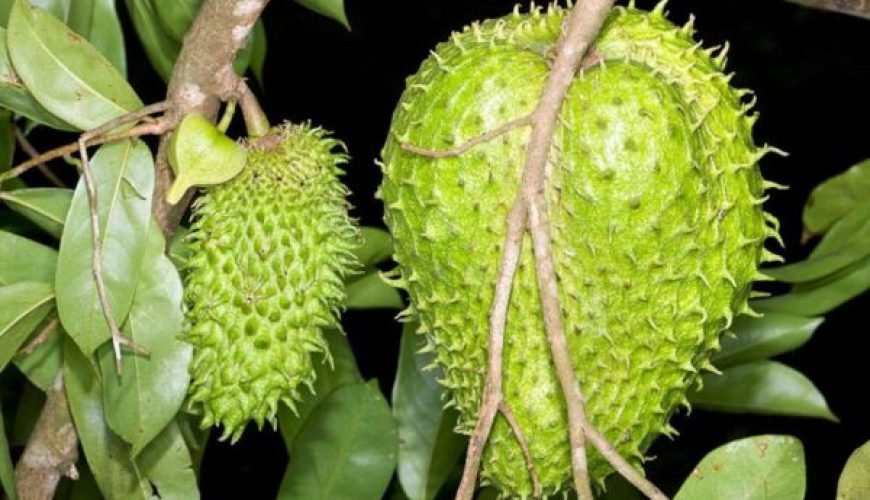
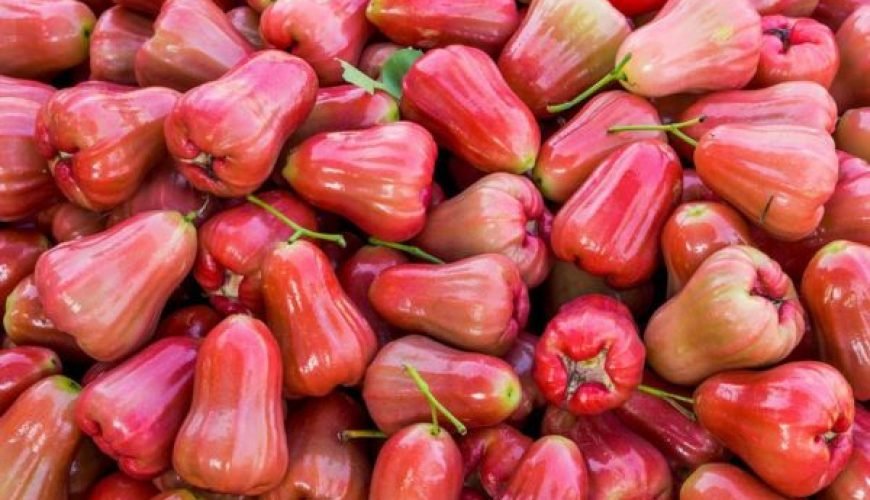




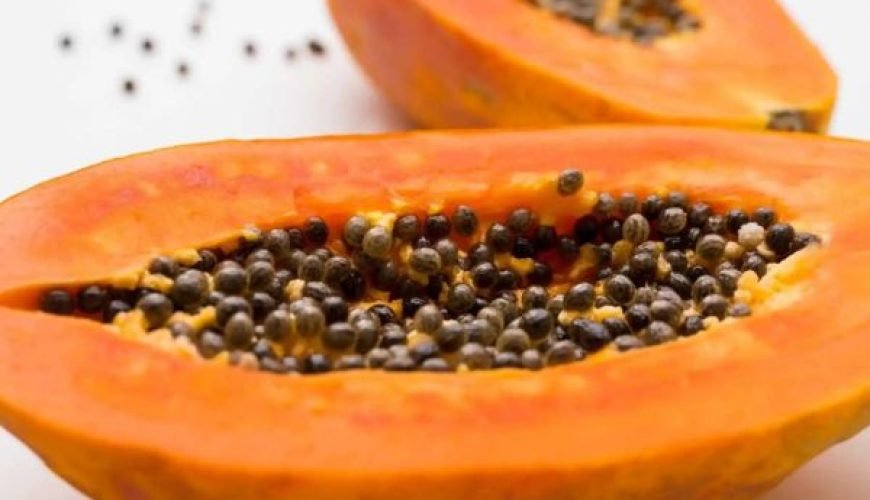


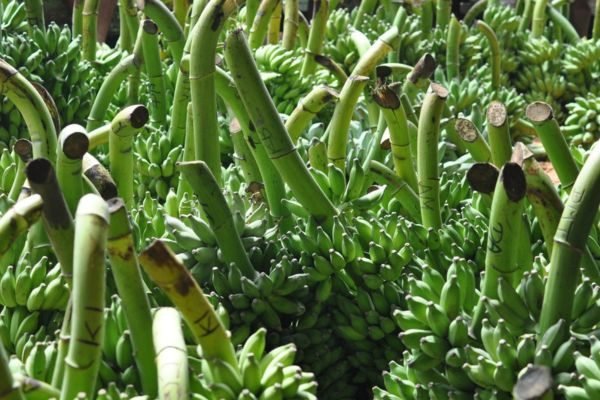
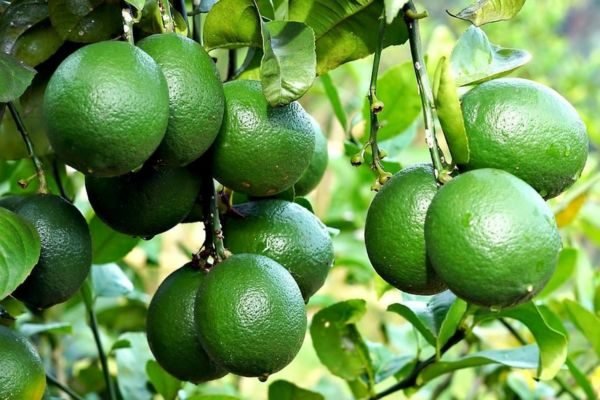
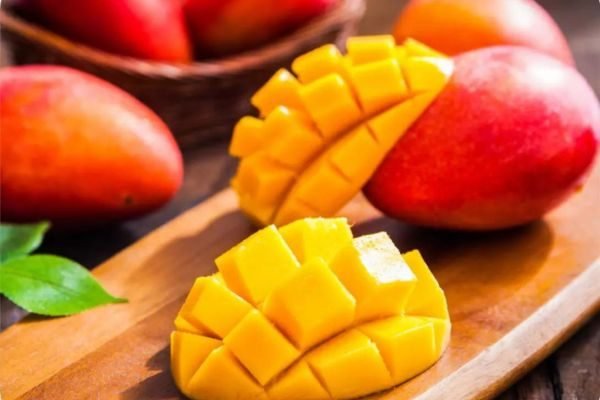
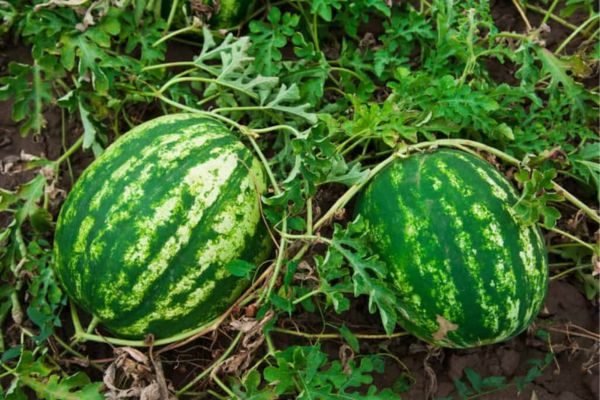
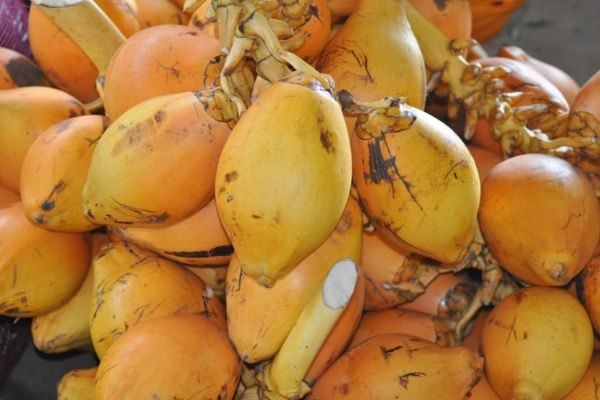
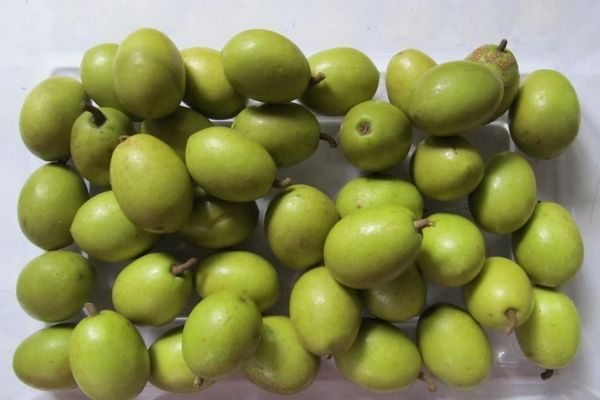
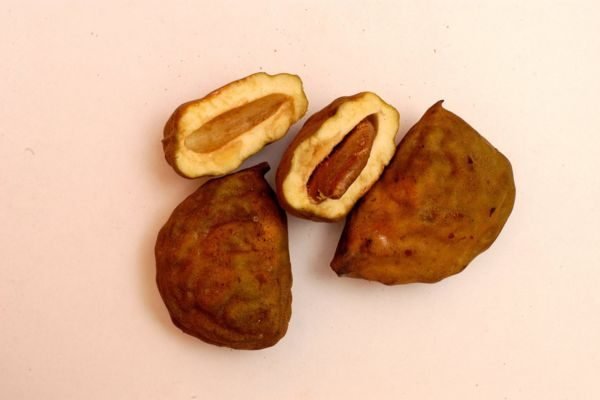
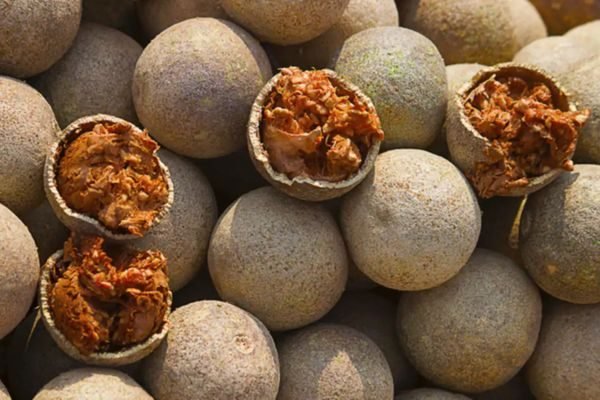

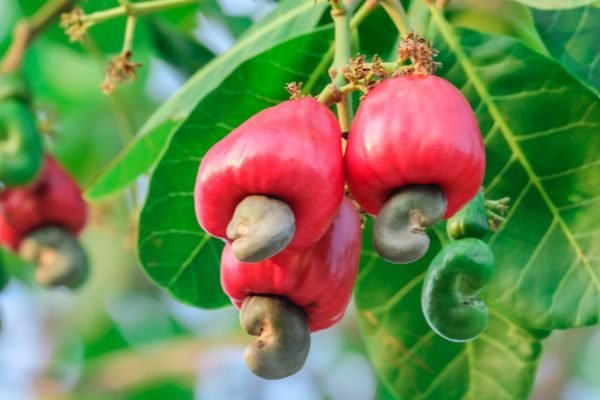
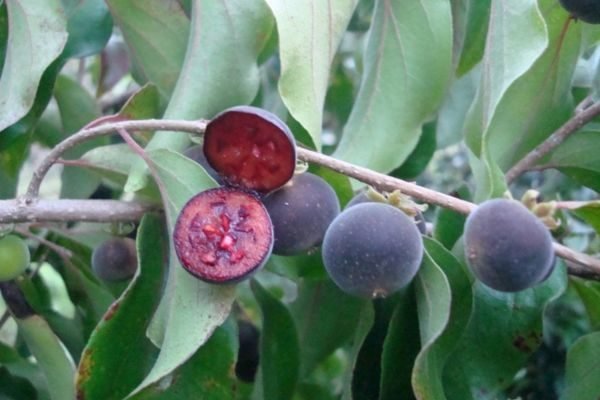
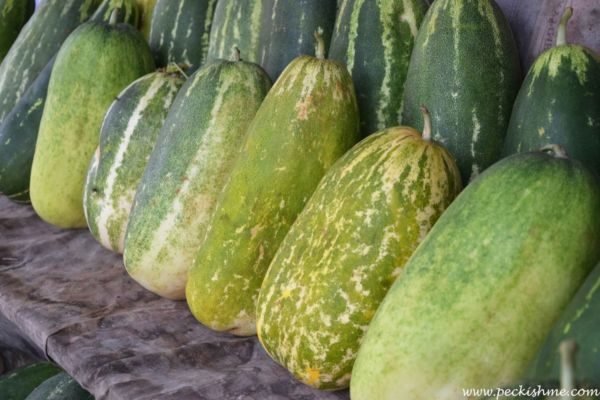
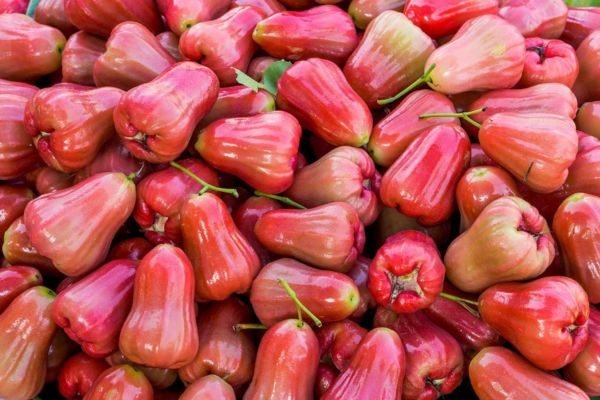
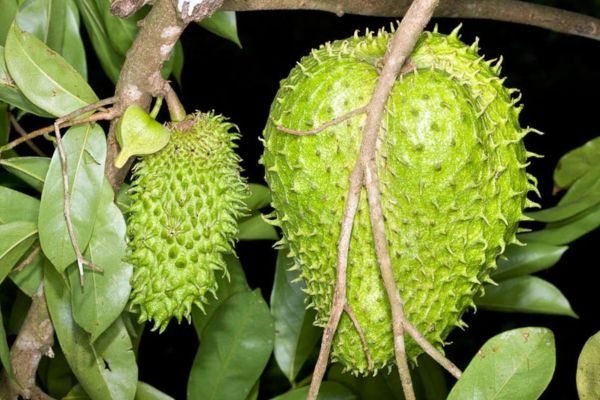

0 Comment